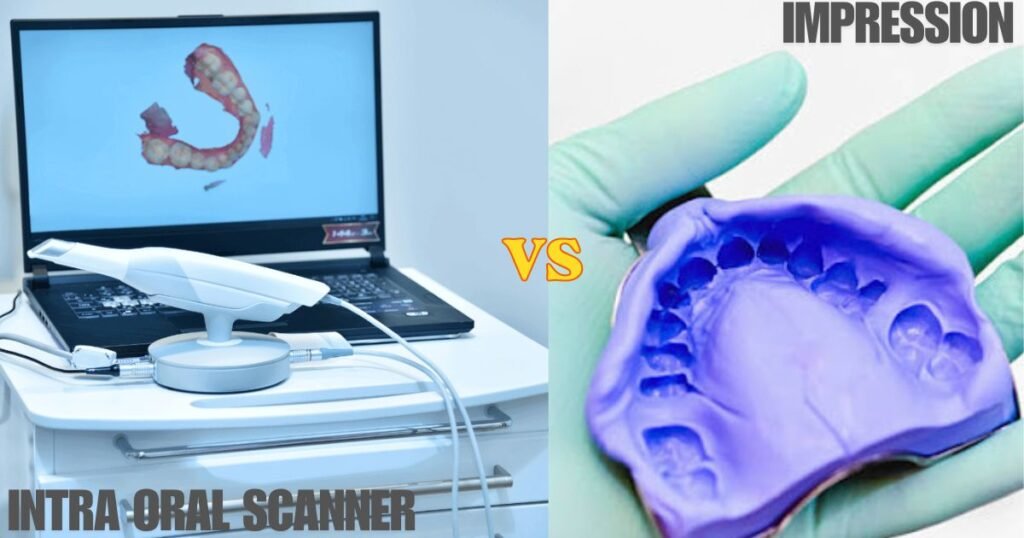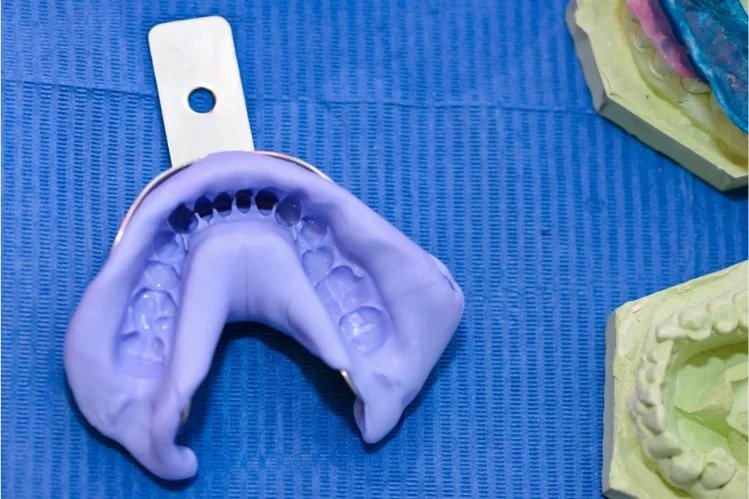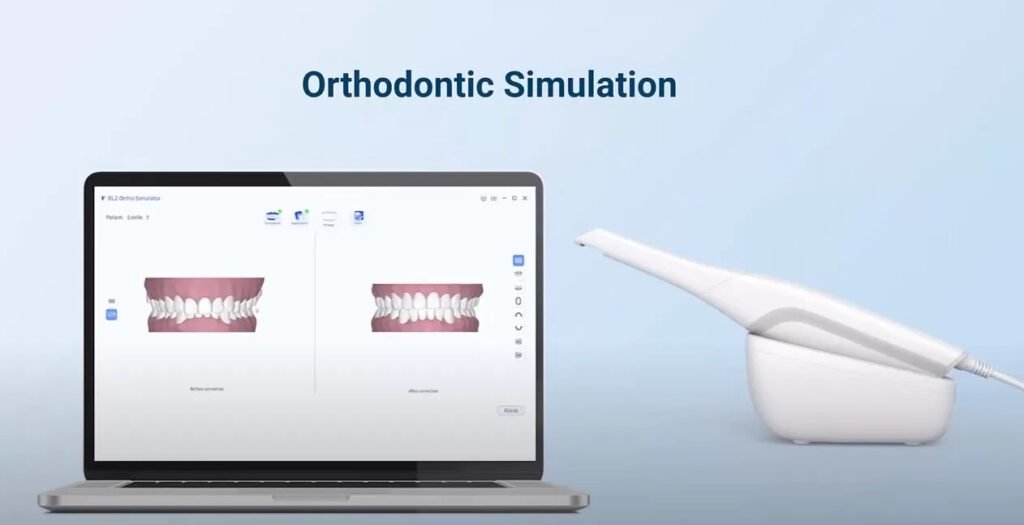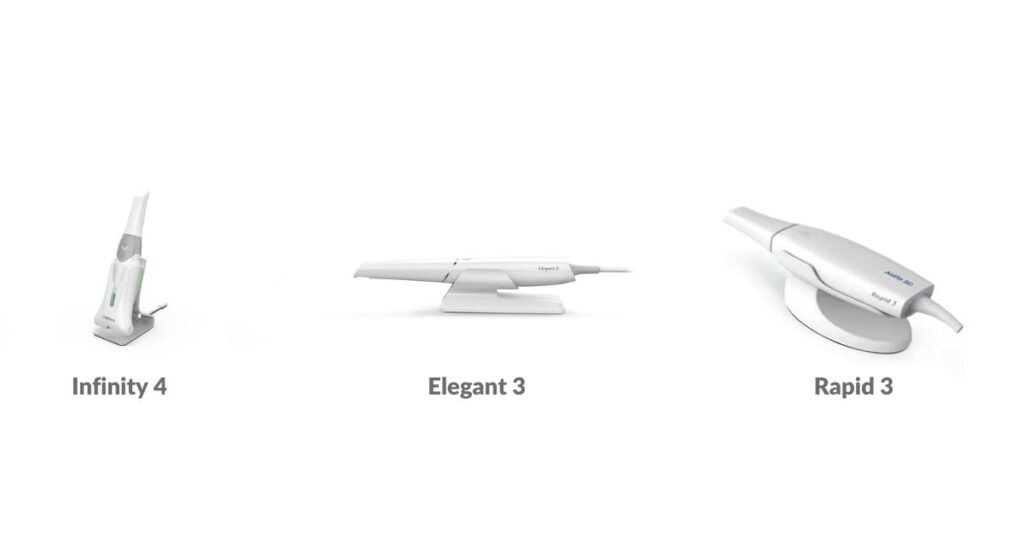
In traditional impressions, the dentist makes a physical mold of the patient’s teeth, whereas intraoral scanners take accurate digital copies of the patient’s mouth quickly. The following article will showcase a detailed intraoral scanner vs impression comparison to find answers to why use intraoral scanners instead of impressions, and their application to procedures such as crowns, orthodontics, and more.
- Traditional Impressions: A Brief Overview
- Intraoral Scanning: Key Features
- Advantages and Disadvantages
- Comparative Analysis: Digital vs. Traditional Impressions
- Intraoral Scanner vs Traditional Impression for Dental Crowns
- Intraoral Scanner vs Dental Impression for Orthodontics
- Making the Decision: Intraoral Scanner vs Impression
- Aidite’s Intraoral Scanner: Leading the Digital Revolution
Traditional Impressions: A Brief Overview

Physical impressions using alginate or silicone is being used for crown and bridge and other restorative applications for decades. Here are some of the drawbacks:
- Not Comfortable With Patient: Patients sometimes experience gag reflexes or feel uncomfortable sensations.
- Risk for Error: Incorrect blending or distortion can reduce precision.
- Lengthy Process: It takes time for the material to set. The physical models also need to be moved to a lab.
- Storage and Shipping: Molds may shatter or deteriorate due to wear over time, leading to difficulty in storage.
Still, in part for these reasons, clinicians frequently continue to depend on impressions for complex cases. The old way might also be cheap in some cases and processes are familiar.
Intraoral Scanning: Key Features

An intraoral scanner is a hand-held instrument that takes the topography of a patient’s oral cavity using light or laser technology in real-time. This results in instant 3D digital model on the computer screen. The technique is sometimes named an intraoral scanner for accurate impressions due to its selective scanning capabilities in the micron range.
The following things benefit both practitioners and patients:
- Improved Accuracy: With a digital scan, even the smallest variations in the surface can be reproduced.
- Better Patient Experience: No sticky stuff, no gagging.
- Save time: Results are immediate, allowing for more rapid exams and treatments.
- Fewer Remakes: Because most manual mistakes are avoided less number of impressions are required.
Advantages and Disadvantages
Digital Impressions
Advantages:
- Enhanced Accuracy: Real-time data capture minimizes errors and allows immediate rescanning if needed.
- Patient Comfort: Smaller devices and a less invasive process provide a more pleasant patient experience.
- Streamlined Workflow: Digital files can be shared instantly with dental labs, reducing turnaround times.
- Eco-Friendly: Reduction in physical materials means lower waste and a smaller environmental footprint.
- Versatility: Integration with CAD/CAM systems facilitates precise and custom restorations.
Disadvantages:
- High Initial Cost: The upfront investment for scanners and necessary training can be significant.
- Learning Curve: Dental professionals must learn how to use the new technology effectively.
- Technical Issues: Poor-quality scans may occur if the device is not handled correctly, and some scanners may still be challenged by reflective surfaces or limited mouth openings.
Traditional Impressions
Advantages:
- Cost-Effective Materials: The materials required for traditional impressions are generally inexpensive.
- Simplicity: The process is well understood by most dental professionals, and most practices already have the necessary equipment.
- Versatility in Challenging Cases: In certain situations, such as with patients who have excessive saliva or very deep subgingival margins, traditional techniques may sometimes capture details better than digital methods.
Disadvantages:
- Patient Discomfort: The bulky impression trays and the sensation of setting material can be uncomfortable or even induce gagging.
- Risk of Distortions: Physical impressions are susceptible to errors if the patient moves or if the material does not set uniformly.
- Additional Steps: The process requires additional steps, such as pouring the impression and shipping the physical cast to a lab, which can delay treatment.
Comparative Analysis: Digital vs. Traditional Impressions
When comparing digital impressions with traditional impressions, several factors come into play, including accuracy, patient comfort, workflow efficiency, cost, and environmental impact.
Accuracy and Precision
Digital impressions have the potential to offer greater accuracy. In traditional methods, impression materials can sometimes lead to errors. Changes in temperature, humidity, or even minor movements during the impression process can result in distortions. In contrast, intraoral scanners capture data in real time, which means that if an error is spotted, that portion can be quickly rescanned. This immediate feedback helps ensure a high level of precision that is often difficult to achieve with conventional methods.
Patient Comfort
One of the greatest benefits of digital impressions is enhanced patient comfort. The scanning process is generally faster and less invasive than traditional impression-taking. With a small handheld scanner moving around the mouth, many patients experience less gagging and discomfort compared to having a bulky tray full of material pressed against their teeth. This advantage is especially important when treating children, elderly patients, or individuals with high anxiety about dental procedures.
Efficiency in Workflow
Time and workflow efficiency are crucial in a busy dental practice. Traditional impressions require additional steps after the initial impression, such as pouring the impression into a cast and transporting the physical model to a dental laboratory. These steps can extend the time needed to begin treatment. On the other hand, digital impressions are completed quickly, and the resulting file can be sent electronically to a lab almost immediately. This seamless process not only saves time but also reduces the chance of errors related to physical handling and storage.
Cost Considerations
Cost is always an essential factor in choosing technology. Traditional impression materials like alginate and silicone are relatively inexpensive upfront, making them an attractive option for practices with a limited budget. However, there are hidden costs, such as the storage and shipping of physical models, as well as potential remakes if an impression is distorted. Digital systems, while requiring a higher initial investment in scanners and training, can reduce long-term costs through improved efficiency, fewer remakes, and lower material expenses. As technology advances, the cost of digital systems continues to decrease, making them an increasingly viable option even for smaller practices.
Environmental Impact
As sustainability becomes more important across all industries, dental practices are also looking to reduce their environmental footprint. Traditional impressions generate waste in the form of disposable trays, chemical materials, and plaster models that require physical storage. Digital impressions, in contrast, rely on electronic files, which significantly reduce the amount of physical waste and lower the environmental impact associated with material disposal and storage.
Intraoral Scanner vs Traditional Impression for Dental Crowns
Crown fabrication is one of the most common procedures in dentistry. Let’s analyze intraoral scanner vs traditional impression for dental crowns:
- Digital Impression Process: The dentist captures a scan, checks the virtual design, and transfers it directly to the lab software. The crown can be designed immediately by the lab.
- Traditional Impression Method: The dental practitioner makes an impression, sends it off to the laboratory, and the model comes back. Mistakes (tray distortion) can cause a remake or extra appointments.
In some modern practices, digital impressions have demonstrated a better fit of crown margins and fewer recalls, providing a more affordable technique for the patient. This is a good instance of why use intraoral scanners instead of impressions, especially when time and accuracy is a high priority.
Intraoral Scanner vs Dental Impression for Orthodontics

The field of orthodontics heavily depends on precise measurements to plan the movement of teeth. Therefore, intraoral scanner vs dental impression for orthodontics is a key question many specialists face.
Traditional Orthodontic Impressions
- It is more time-consuming, and sending the mold to a laboratory may cause a delay in treatment.
Digital Orthodontic Scans
- The high-resolution scans are fed into specialized planning software.
- Orthodontists can visualize the movements of the teeth and allow the patient to see a preview of their future smile.
- Fewer need to be repeated, which improves patient comfort as well as efficiency in practice.
Taking all of this into consideration, it is no surprise that the majority of orthodontists are moving towards digital, especially in order to cut down on patient chair time and utilize advanced simulation software.
Making the Decision: Intraoral Scanner vs Impression
Every dental practice or lab must assess their respective needs when making such decisions. Before choosing which method will be ideal, consider practice size, budget, and complexity of cases treated. However, for a vast majority of cases, the case for intraoral scanners better than traditional impressions is compelling, specifically regarding patients comfortability, workflow efficiency, and accuracy.
Aidite’s Intraoral Scanner: Leading the Digital Revolution

When exploring the intraoral scanner vs impression, Aidite’s intraoral scanners stand out. They are more suitable for modern dental practice. Aidite offers a wide range of products designed to meet various clinical needs. So the professionals have access to the best intraoral scanners.
Key Features of Aidite’s Intraoral Scanners
A. Infinity 4
- Wireless Technology: Utilizes Wi-Fi and a robust 3500mAh battery, providing freedom from cables and enhancing maneuverability.
- High Accuracy: Achieves an average full-arch accuracy of 20µm, making it ideal for precise restorations.
- Lifetime Calibration-Free: Precision assembly ensures consistent performance without the need for regular calibration.
B. Rapid 3
- Broad Scanning Depth: Capable of scanning up to 15mm, ideal for implant cases and long bridge missing teeth.
- Remote Sensing Control: Features one-click remote control operation, allowing adjustments without touching the computer.
- Data Sharing: Facilitates easy data transfer via QR codes and quick email communication with labs.
C. Elegant 3
- Compact and Lightweight: Weighs only about 240g, making it highly portable and comfortable for extended use.
- High Disinfection Capability: Can be disinfected up to 100 times using high-temperature and high-pressure methods.
- Smart Remote Operation: Equipped with a double-sided button for easy scanning of upper and lower arches without changing grips.
Conclusion:
Aidite’s intraoral scanners are the most optimal solutions when it comes to intraoral scanner vs impression. Aidite stands out for any professional who is looking for the best dental intraoral scanner. It’s all thanks to precision and ground-breaking wireless technology raising the bar for clinical workflows and patient experiences.
Choosing Aidite means investing in cutting-edge technology that not only meets but exceeds the demands of contemporary dental practices. Whether you’re performing routine crowns, complex orthodontic treatments, or precise implant placements, Aidite provides the reliability and performance necessary to achieve exceptional results.
Intraoral scanner vs impression—the evidence is clear: Intraoral scanner is the best. By adopting Aidite’s advanced intraoral scanners, your practice can embrace the future of digital dentistry, offering superior care, increased efficiency, and enhanced patient experiences.



